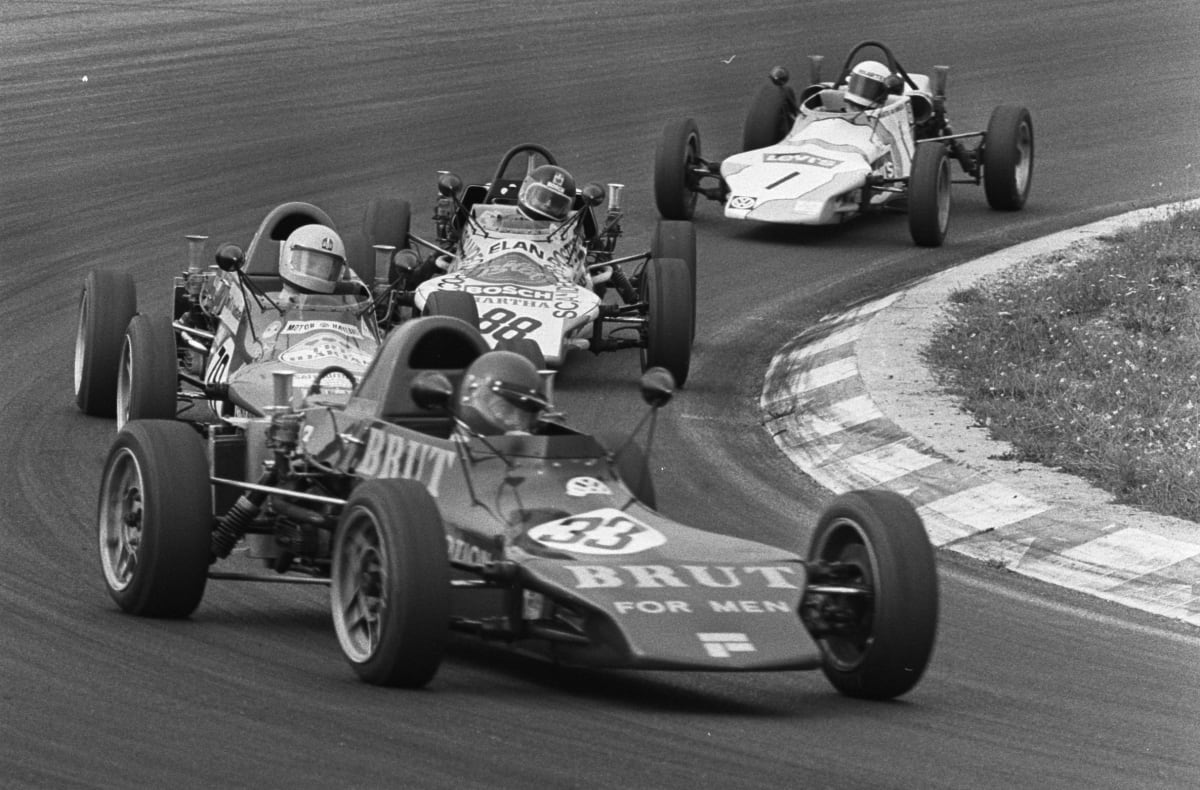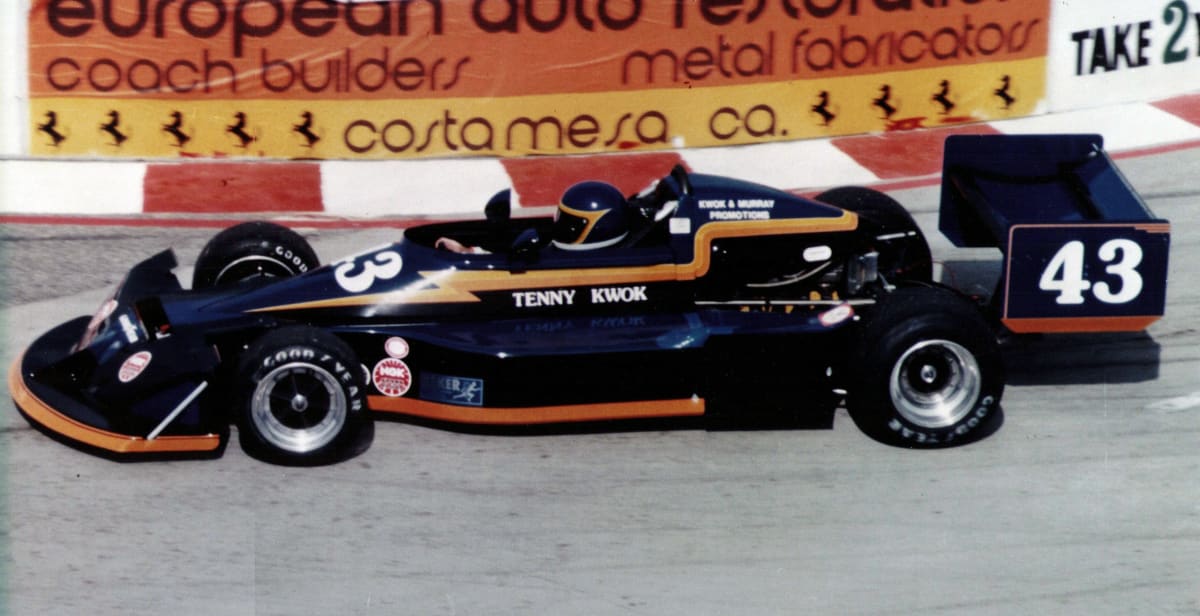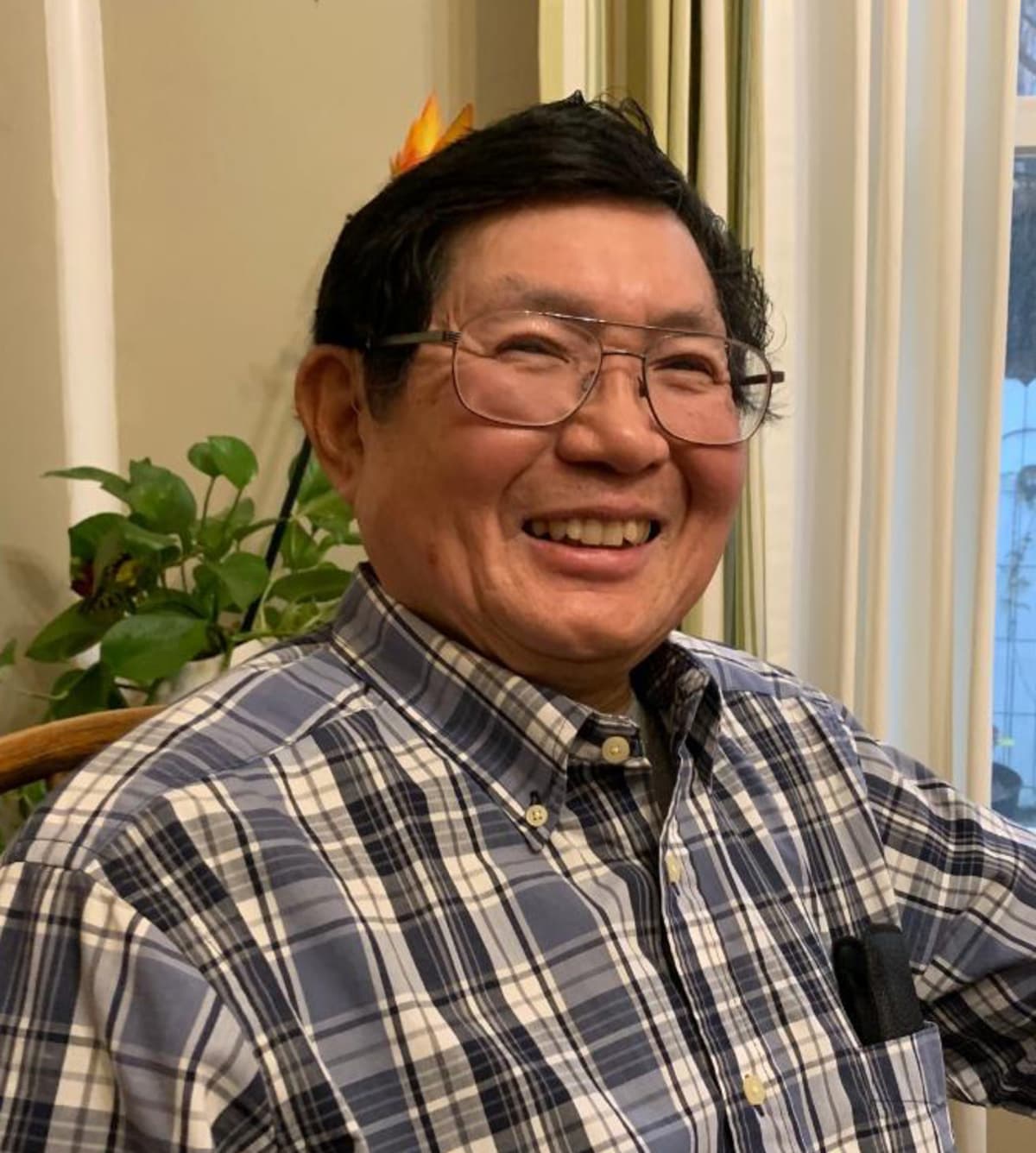THE FAST & THE CURIOUS: buy a car, join a club, go racing!
Published on Thu, Apr 16, 2020
By: The LACar Editorial Staff
In the 1970s, if you had the will and a little bit of the way, you could forge a path to road racing in Southern California
Above: The author in his All American Racers Eagle Formula Ford, with AAR Vice President Kathy Weida.
Tennyson Kwok, Guest Writer
The Fast and the Curious
Baby boomers were coming of age in the 1970s, and road racing was becoming very popular—especially in Southern California. Internationally famous Riverside International Raceway was hosting many popular events, including the Motor Trend 500 (NASCAR) and the Los Angeles Times Grand Prix. I, along with many other baby boomers, were drawn in by the sweet sirens of road racing.
How it All Starts
The Sports Car Club of America (SCCA), California Region—commonly known as Cal Club—was the primary way to obtain road-racing experience. So after joining Cal Club, I went to observe some of the autocross at Willow Springs Raceway and Riverside Raceway. It was the best way to see club racing and the classes that were represented back then.
The basic classes were Production (sports cars and sedans), Sports Racing (closed wheel, two-seat, dedicated race cars) and Formula (open wheel). For any of the production classes, you could potentially race prepare the car you owned—from Austin Healey Sprites to Corvettes—and race it. Many of the marques had factory-racing parts available, and there was the potential for dealer and factory support. These included British Leyland, Lotus, Porsche, BMW, Alfa Romero, etc. Alternately, one could purchase a car designed specifically for racing. Although a street car cost was generally cheaper than a race car, one could spend vast sums bringing a street car up to racing
standards.
Once you had a race-prepared car with the required safety equipment, you could then start the process of obtaining your racing license. This required completing two weekends of SCCA conducted driver’s school. The weekends consisted of drive around with your assigned instructor, and stints driving your own vehicle around the track under close observation by your instructor. On Sunday, two short practice races were conducted, as long as your instructor deemed you qualified. Once successfully passed the two driver’s school weekends, you were assigned a provisional “novice” license. You had to place an “X” next to your racing number so that other drivers and club officials could see that you were a novice. You had to complete four regional races as a novice before being upgraded to an SCCA regional license.
The Class Warfare
Typically, in three-day events, there would be both a regional and national race. In two-day events, they were either regional or national events. On a two-day event, Saturdays would have two half-hour practice sessions, and Sunday morning a 20 minute qualifying session, and then an afternoon 30-minute race. After completing four regional races with the regional license, you could obtain your SCCA national license. Then you could compete in SCCA national races for national points. The top three point leaders per SCCA region could go to the annual National Runoffs held at the end of the year (November) to determine the National Champion in each class. Many National Champions went on to successful professional racing careers.
Since some classes had fewer entries, many of the SCCA 30-minute races consisted of multiple classes grouped together. It would not be out of the ordinary for groups A through C to race together, and for that matter, groups D through H. Of course, points were award based on the class position. They tended not to mix up the open wheel with closed wheel classes. “Fender rubbing” is inherent with closed wheel classes, but open wheel contact could easily launch a Formula racing car upwards, potentially causing serious damage or injury. In Southern California, the two largest classes, Formula Vee and Formula Ford, would have their own single class race.

Production Sports Car Classes
Porsche, Datsun (now Nissan), British Motor Corporation (MG, Austin Healy, Mini Cooper) and Alfa Romero all had some form of customer support for racers, and most sponsored factory teams. So if an independent driver did well, he could receive partial sponsorship or be hired to join one of the factory support teams. Of course, for an independent driver to compete successfully against the factory teams, the car chassis and engines had to be heavily modified. The factories would offer parts and advice, but probably not the latest and greatest equipment.
Production Sedan Classes
Muscle cars (e.g., Mustang, Camaro, Barracudas) were a very popular A-Sedan class. Ford, MOPAR and General Motors had factory racing parts easily accessible for racers. The very popular Trans-Am Series resulted. Therefore, many successful A-Sedan SCCA drivers raced in the Trans-Am Series. IMSA (International Motorsports Association) also had races with this class. B-Sedan (BMW 3 series, Datsun 200SX, Alfa Romeo Guilia, etc.) was also popular and featured many factory teams. The SCCA Trans Am Series and IMSA had over and under 2.0 liter categories for Production Sedan racing.
Sports Racing Classes
Sports Racing cars were quite popular in Europe, Lotus and Lola being some of the more popular manufacturers. These classes sported full race prepared engines. There were U.S. importers of new and used European sports racing cars. A-Sports Racing cars had the fewest regulations (some had 7 liter engines) and had the same specifications as the over 2 liter Can-Am cars. Of course, these were very expensive to operate. B, C, and D Sports Racing Cars had correspondingly smaller displacement engines and cost lower to operate.
Formula Car Classes
Formula A/Formula 5000 was the top open wheel class, and the engines were limited to 5 liters if based on a production engine (Chevrolet and Ford were the most popular V8’s), or 3 liters if a full race engine, such as used in Formula 1 at the time.
Formula B/Formula Atlantic, maximum of 1.6 liter engines, was a popular class. Originally, Alfa Romeo and Ford Cortina Twin Cam engines were prevalent, but the Cosworth BDA (Belt Driven dual overhead cams) dominated the class. Formula B/Formula Atlantic, were based on Formula 2 cars with 1600 cc race prepared engines. With 210 hp engines and 1000 lb. chassis, these were full-fledged racing cars. An American-Canadian Formula Atlantic professional series had international prestige. A two time series champion, Gilles Villeneuve, went directly from Formula Atlantic (the profession series designation of Formula B) into the Ferrari Formula 1 team.
Formula C, with 1.1 liter engines, were based on European Formula 3 specifications. Formula Super Vee Class had race prepared VW engines, air and water cooled. USAC had a professional FSV class, and many FSV champions went on to race Indianapolis Championship cars.
But the most popular Formula Classes were Formula Ford and Formula Vee. These tended to be the most cost effective as the engine regulations basically only allowed blue printing (machining factory parts to optimum factory tolerances), and very few racing modifications. Most of the modifications allowed were to improve reliability, which of course, actually helped reduce costs.
Formula Ford was the most popular open wheel class in the world at that time. Many racers of the day closely followed European racing, such as Formula 1 and Le Mans. Many cars being raced (production and race cars) were built in England. In England, the class with most participants was Formula Ford, a small open wheel single seat race car with a 1600 cc (98 cu. in.) Ford Cortina Engine. The engines could only be blue printed, and all parts had to be Ford factory parts, and few modifications were allowed. Formula Ford became an SCCA National class in 1969, and quickly became the most popular class in the U.S.
Formula V (Formula Volkswagen) was also a popular open wheel class due to cost. The chassis parts and engine had to come from early VW beetles. But they only had about 50 hp, so although the racing was close, the skills of the driver were not tested as highly as in the more powerful classes.

My Personal Experience with Formula Ford and Formula B/Atlantic Classes
From the age of 16, I raced go-karts (or karts as they are now known as), which of course feature open wheels. So I naturally gravitated towards open wheel racing. Formula Ford seemed to provide the best experience, especially since my goal was to race professionally. Formula Fords performance: 0-60 5.0 seconds, 125 mph, 1.1 G’s cornering. At Riverside Raceway, top average speed for Formula Fords was over 100 mph.
In my first novice Formula Ford race at Riverside Raceway in May of 1973, 65 cars started the regional race. In one of the 1975 Riverside Raceway National Formula Ford races that I later entered, at least four drivers in the race would later race in the Indianapolis 500. Since there were so many cars in each race, no matter what position you were in, there were always other cars with your pace to race with.
Unfortunately, there also were many minor to major accidents since the racing is so close. Three drivers—of the likely 100 or so that I ultimately competed against—lost their lives in Formula Fords. It seemed like that there was always a first lap crash somewhere in the field. After a few races, I started using new tires for the race day, for qualifying and for the feature race, which accounted for about 1 second per lap over one race old tires. One second could cover about 15 cars at Riverside Raceway, and having new race tires allowed me to qualify in the top 10. The first time I used new race tires and qualified higher in the field, there was a multi-car crash involving cars in the positions that I had previously qualified with, so the new tires were also somewhat of an insurance policy.
Winning
It took me longer than expected to win races, but in 1977-1978 I won three regional races in a row. The last win was at Riverside Raceway when I was invited to race for Dan Gurney’s All American Racers (AAR). I had hoped that that win would propel me to fame and fortune, but alas, sponsorship did not materialize.
I then purchased a March 77B Formula Atlantic to race in the 1979 Long Beach Grand Prix, in conjunction with Formula 1, on the original circuit that used Ocean Blvd. Road and Track did a road test of a March 78B Formula Atlantic, and it did 0-60 in 2.7 seconds, and cornered over 2 Gs. Although ground effects were not used in race cars yet, it did have wings. The Goodyear racing tires were 10 inches (255 mm) wide in the front and 14 inches (356 mm) wide at the rear.
I did pretty well in my first SCCA Regional race with the car, qualifying second to Steve Saleen (who later founded Saleen Cars), and led a few laps. But I was unable to qualify well at the Long Beach Grand Prix and retired from racing shortly thereafter.
By my estimation, Formula Atlantic Cars cost about $500 an hour (1979 dollars) to operate even at an amateur level, so sponsorship was required for the average person. In comparison, Formula Ford cost about $500 a weekend to race, which was almost 2 hours of track time. As a single person with an Engineer’s salary, Formula Ford was somewhat affordable, but not Formula Atlantic.
A Few Tips for Today’s Future Racers

Today, for someone interested in pursuing road racing, there are many avenues to follow, from “Track Days” in your own car, to Multi-tiered Driving Schools. The least expensive ways to determine whether racing is an endeavor to pursue is to do “track days” with your own street car (only minor safety equipment is required) or to rent/race Go-Karts. Virtually all of today’s professional road racers started racing karts at a young age, once described as “racing’s little League”. However, the top classes in karts are senior classes, and the 125cc shifters are every bit as challenging to drive as race cars. The shifter karts have four-wheel disk brakes and 6 speed manual transmissions. They have been tested to accelerate 0-60 mph in 4.0 seconds, and corner well over 2 Gs. But in any kind of racing, one should not start in the top classes, as these might be too intimidating, and of course the most expensive. One should plan on “moving up the ladder” when looking at class structures.




